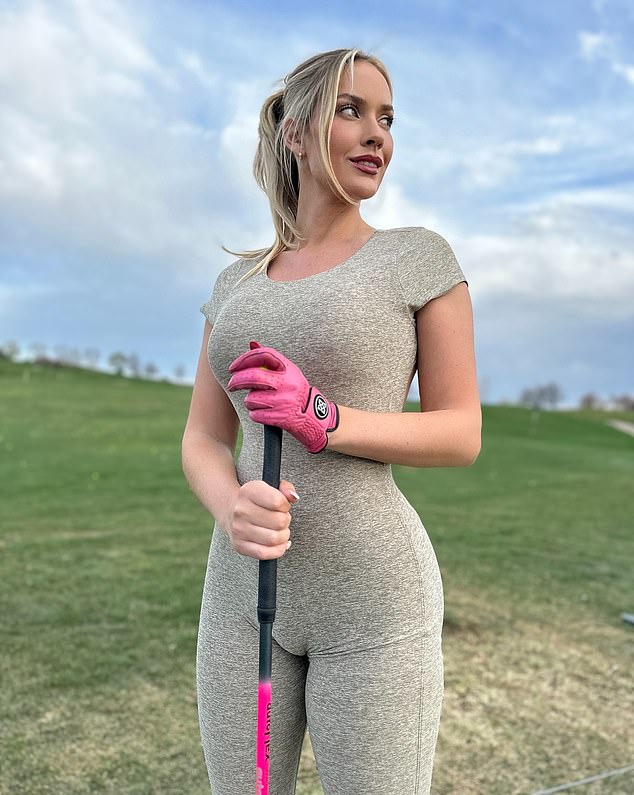Paige Spiranac Defends Rory McIlroy: A Closer Look at Media Relationships in Golf
Introduction
In the world of professional golf, the intersection of athletes and media is often fraught with tension. Recently, social media influencer Paige Spiranac came to the defense of Rory McIlroy following criticism of his behavior during the U.S. Open. The ongoing discourse about media obligations and the scrutiny faced by athletes has sparked a broader discussion in the golfing community. In this article, we will delve into the details of the situation, analyze McIlroy’s media strategy, and explore Spiranac’s perspective, all while highlighting the intricacies of athlete-media relations.
Rory McIlroy’s Media Absences
During the recent U.S. Open at Oakmont, McIlroy chose to forego media interviews after both his Thursday and Friday rounds. When he finally did face reporters on Saturday, it resulted in a tense exchange that lasted approximately five minutes. McIlroy expressed his frustration, asserting that he felt entitled to dictate his media commitments. Despite finishing tied for 19th, with a commendable final round of 3-under-par, his media decisions became the focal point of the tournament coverage instead of his performance.
The Pressure on Athletes
Being one of the most popular golfers worldwide, McIlroy’s life is continually under scrutiny. This scrutiny has intensified following his victory at the Masters earlier this year, which allowed him to complete the Grand Slam of golf. With every swing and every statement analyzed to the fullest extent, the pressure on athletes like McIlroy can be immense. The media’s role, which is often to provide coverage and insights, sometimes morphs into an overbearing presence that can affect an athlete’s mental well-being.
Paige Spiranac’s Support
Spiranac, renowned for her influence on social media, voiced her support for McIlroy in a heartfelt post. She explained that while the media plays an essential role in sports, athletes should have the freedom to decide when they want to engage. "It’s not required for him to talk to the media if he doesn’t want to," she stated, resonating with many fans who sympathize with the pressures golf professionals face. Her remarks aimed to underline the emotional toll that constant analysis and criticism can impose on athletes.
The Unseen Struggles
Spiranac suggests there might be underlying issues impacting McIlroy’s performance and demeanor. She noted, "There is clearly something more going on none of us are privy to," emphasizing that speculation without insight into an athlete’s personal struggles can perpetuate a toxic environment. The media landscape should sometimes prioritize empathy over sensationalism, giving athletes the space to navigate their challenges without undue pressure.
Historical Context: Media Relations in Golf
The relationship between golfers and media is not new, but it has evolved significantly over time. Traditionally, golfers were expected to uphold a rigid code of conduct, often leading to curated personas. However, the rise of social media has shifted the dynamics, allowing athletes to communicate directly with fans and bypass traditional media platforms. This evolution puts added pressure on traditional media to adapt and perhaps reconsider their approach to coverage.
Understanding Athlete Autonomy
Athletes are not just competitors; they are individuals with personal lives and feelings. McIlroy’s decision to skip media sessions has drawn criticism, but it also raises critical questions about athlete autonomy. Should professional athletes be compelled to disclose their thoughts after every performance? Many argue that the answer is no, as it can lead to burnout and affect mental health. In an era where mental well-being is gaining recognition, re-evaluating media obligations is timely.
The Impact of Social Media
Social media has democratized communication in sports, enabling athletes to engage with their fans directly. This evolution can serve as a double-edged sword. While it grants athletes more control over their narratives, it also exposes them to immediate backlash and judgment. Spiranac herself knows this world all too well; despite being a prominent figure, she often faces criticism based on her posts and public appearances. The need for balanced dialogue in sports discussions has never been more apparent.
Recent Media Incidents in Golf
Similar to McIlroy’s situation, other golfers have found themselves amidst media storms. For instance, McIlroy faced backlash after the PGA Championship when his driver equipment issues were leaked. His frustration with how his situation was publicized illustrates the thin line athletes walk between their personal and professional lives. Such incidents shed light on the constant tug-of-war for media attention, which often detracts from the game itself.
Conclusion: A Call for Understanding
As Paige Spiranac advocates for Rory McIlroy, it’s imperative for fans and media alike to consider the human aspect of sports. Athletes deserve the space to address both their achievements and their struggles without the overwhelming pressure of media obligations. In this evolving landscape, stakeholders need to navigate the balance of coverage while respecting athletes’ autonomy and mental health. By fostering a more supportive environment, we can encourage open dialogue that speaks to sportsmanship and wellness in golf.
As the golf community continues to examine its approaches to athlete communication, it becomes crucial to embody the spirit of support and understanding. In a sport often held captive by historical traditions, embracing change may lead us to a healthier, more compassionate future—both for the players and the media that covers them.


